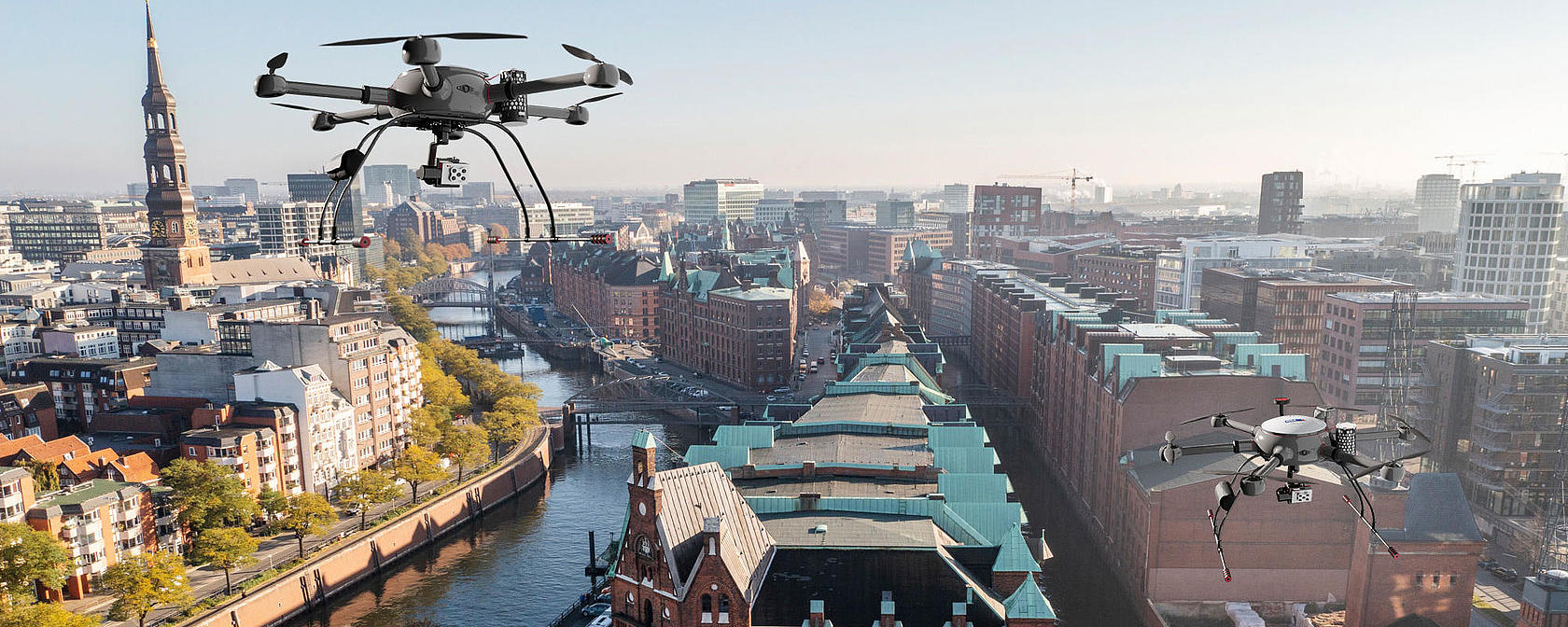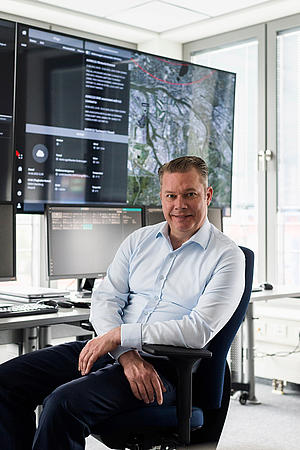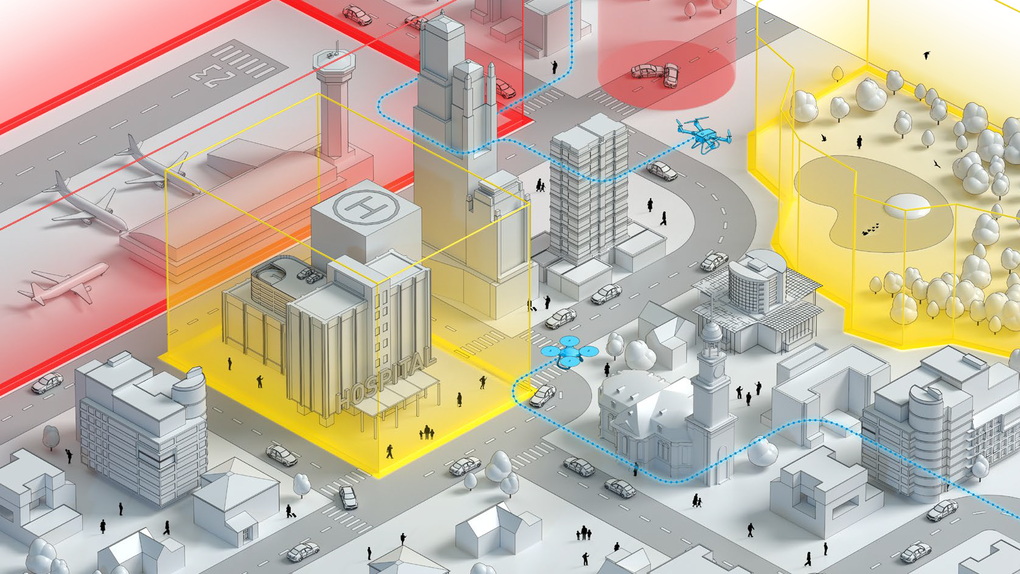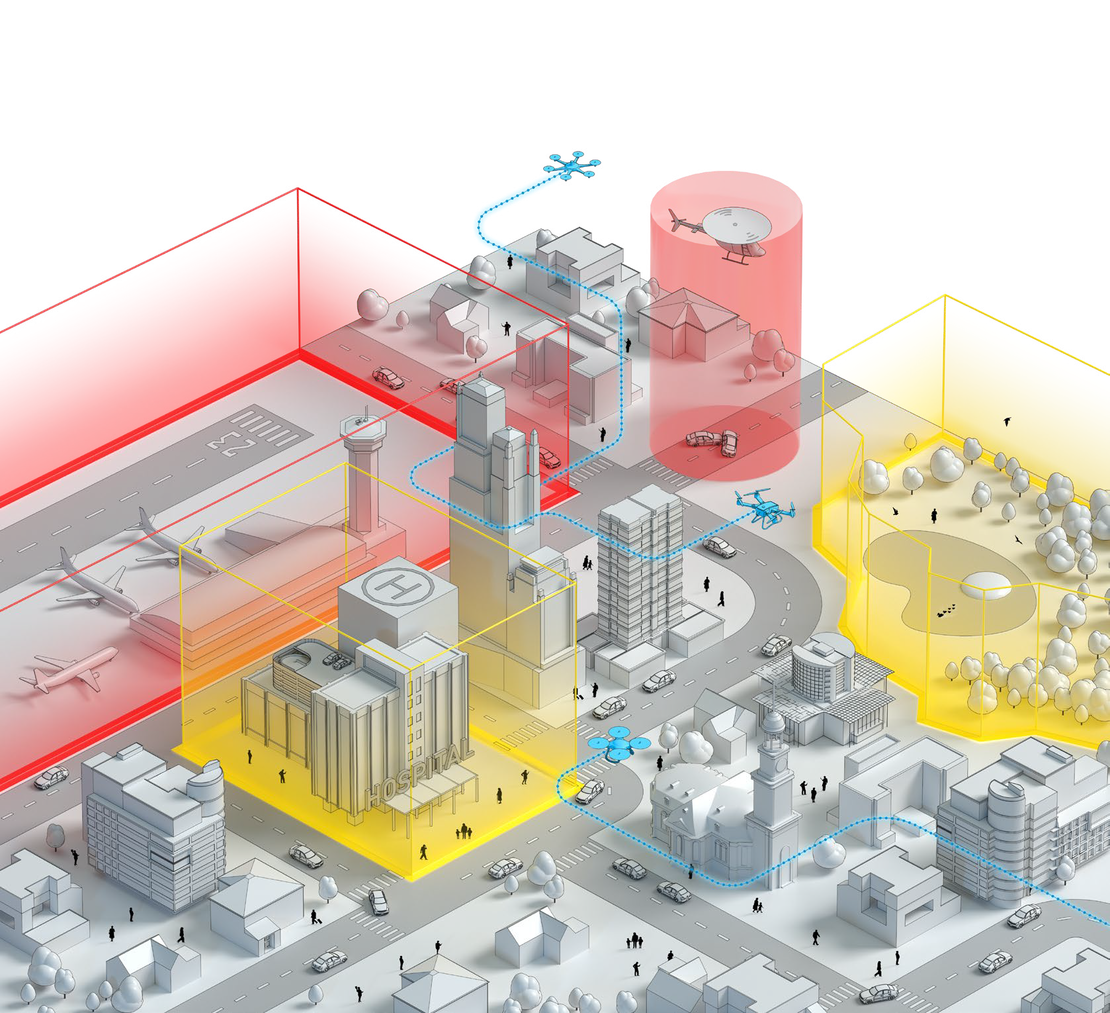Quicklinks
Quicklinks

Drones have long since outgrown their origins as toys and flying selfie cameras. By 2025 at the latest, one in four drones is expected to serve commercial purposes; 135,000 professional aircraft could then be hovering in the skies over Germany. New solutions are being developed in this regard, especially in logistics. In Germany alone, the annual turnover of the “drone economy” is expected to double to 1.6 billion euros by 2025. Yet, for this to happen, manufacturers and regulators still have their work cut out for them.
The range of applications is vast. These include, for example, the inspection of large infrastructure and construction projects, the checking of obscure areas by the fire brigade and of security-relevant installations by the security services, or the gathering of traffic or environmental data.
There is also great potential for certain types of transport. When Google subsidiary Wing tested the delivery of medicines using autonomous aerial vehicles in the Australian city of Logan during the coronavirus pandemic, it ended up with more than 1,000 flights on some days – that's one every 25 seconds.
As a result of this growth, the airspace up to 120 metres above ground, the main area of use for drones, is becoming crowded. “Similar to manned aviation, drone air traffic must therefore also be regulated and controlled”, said Sebastian Törsleff, HHLA Sky expert for such issues.

As a technology leader in hardware and software, HHLA Sky is rising to these challenges. How do they protect their autonomous or remote-controlled drones from, for instance, collisions with other vehicles and aircraft or from interference with data traffic? "We have solutions for this", assured CEO Matthias Gronstedt.
HHLA Sky, founded in 2017 as a corporate start-up of Hamburg Hafen und Logistik AG, has quite literally taken on a pioneering role in the drone economy. Its core product is “the control centre”, which is a unique symbiosis of the planning centre, control centre and air traffic control. This is where the flights for dozens of drones operating autonomously or remotely at the same time can be planned and subsequently monitored and, if necessary, directed – even over a distance of several hundred kilometres from the actual site of the operation. “This is our flagship product”, said Matthias Gronstedt happily. HHLA Sky now supplies customers on four continents with hardware and software for drone operations.
The control centre provides all the tools for safe and trouble-free drone operation. It is the planning instrument for meticulous flight preparations, and it constantly monitors all parameters, such as the weather at the location or the air traffic in the area of operation. The control centre also monitors the course of a flight. If there are any deviations, it sounds an alarm and the operator can intervene in real time.
This development by the Hamburg experts is now gaining additional significance. A few weeks ago, the EU laid the foundations for the establishment of so-called “U-spaces”. A clear set of rules for the use of drones applies here. “This is a very important prerequisite for the successful development of the drone economy”, confirmed Matthias Gronstedt. People living in the area of a U-space must, of course, also be protected from the consequences of possible collisions with the utmost rigour.

You cannot see a U-Space. It is a digitally managed airspace in which unmanned aerial vehicles fly according to certain rules. A business field with a lot of potential: 44 billion could be the market volume in drone logistics in 2030.
>> What exactly is a U-Space?The term U-Space doesn't only apply geographically. It is a digitally managed airspace in which unmanned aerial vehicles fly according to specific rules. It also covers the regulatory framework for drone operations and the processes necessary for coordination. When completed, the U-space can encompass an entire country, but initially, it will be limited to regions with particularly high drone traffic. Thanks to the various stakeholders and research projects, Hamburg has become a pioneer in this area.
Our control centre would be the perfect instrument for airspace surveillance
Anyone flying in U-space must register in advance with a form of aviation supervision authority and submit a clear flight plan. For example, if rescue helicopters or other security forces cross a drone's airspace, it must immediately clear the way or be forced to take evasive action.
This requires that institutions such as the police or rescue services also report their operations directly to the U-space coordinator. According to the EU's vision, this coordinating role is to be taken on by private companies. “Our control centre would be the perfect instrument for airspace surveillance”, said Matthias Gronstedt with conviction, “no other system can take on the necessary and complex tasks”.

The products of HHLA Sky have a great future not only in the sky. A growing number of applications for autonomous or remote-controlled vehicles are also being developed on and under water as well as on the ground. “The technology has now advanced to the point where the devices can also take on tasks that humans can only perform with considerable effort or not at all”, emphasised Gronstedt. The control centre technology is also perfectly suited for controlling equipment deployed in the water or on land: “We don't focus on just airspace”, said Gronstedt.

Looking ahead, the Hamburg drone experts have another aspect firmly in mind. Drones are controlled via radio frequencies and transmit the data they gather digitally and wirelessly. This makes them potentially vulnerable to hacker attacks. Just as in other sectors of the economy, cyber security is also vitally important for the drone economy.
HHLA Sky has already addressed the question of how to protect this data at an early stage and very intensively. Of course, solutions suitable for everyday use have long been available. “As with all security-related topics, we are unfortunately not allowed to discuss details”, stressed Gronstedt, “I can only say this much: we have analysed the potential vulnerabilities and found effective protective measures.”
And why should potential customers of HHLA Sky trust this promise? “TüV has certified us as the first company in the world in this regard,” said Matthias Gronstedt proudly. The way is thus cleared for the booming drone economy, also from a safety point of view.